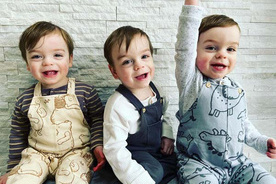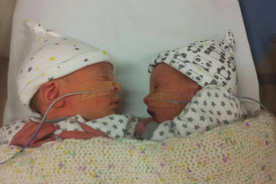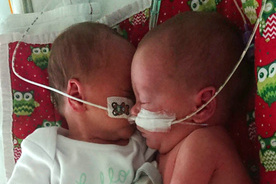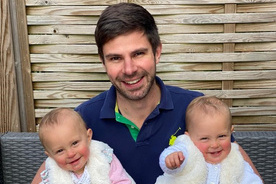6 September 2022
My wife and I had always known we would need a little bit of science in helping us achieve a family, being a same-sex couple.
We started our journey in 2017 at Oxford Fertility clinic. We had 3 miscarriages in a row, and one failed cycle after that. Covid then hit, so when the clinic finally reopened, we were one of the first at the doors to ask to try again. We considered all options and decided that as one embryo wasn’t working for us, we should try two. Of course, this worked; it’s why the others hadn’t- we were destined for twins!
Lindsay, my wife, struggled with the pregnancy; morning sickness was tough and the amount of energy it took to just her through a day was grueling. She started to feel better when she got to the middle of the second trimester, but then for an unknown reason, she experienced a bleed at home. She had had small bleeds and ‘spotting’ earlier in the pregnancy, but this was different. She was exactly 27 weeks at this point. 2 paramedic crews and a helimed doctor came in response to our 999 call, and she was taken away in an ambulance, blue lights flashing and sirens blaring. Due to covid, I wasn’t allowed in that ambulance, but I followed in an ambulance that was luckily returning to base at the hospital.
When we got there, my wife was given steroids and a magnesium drip to help the babies’ lungs and brains develop faster; my wife’s cervix was open and birth looked imminent. The next 4 days were a blurry rollercoaster. I was only allowed in the hospital to be with her if she was deemed to be in active labour. It was bittersweet; I didn’t want her to be in active labour as every minute of the twins being inside her was a step closer to healthy babies, but not being able to support my wife, and being kept out of the loop myself was very tricky. On the 5th day, the babies made their arrival. Sex unknown before; we had one of each gender. Harry arrived first; a natural delivery and weighing in at 2lb 7oz. Eloise followed just over an hour later via C section, weighing in at 2lb 6oz. I had no idea what the monitors all meant at the time, and thank goodness, looking back at the pictures.
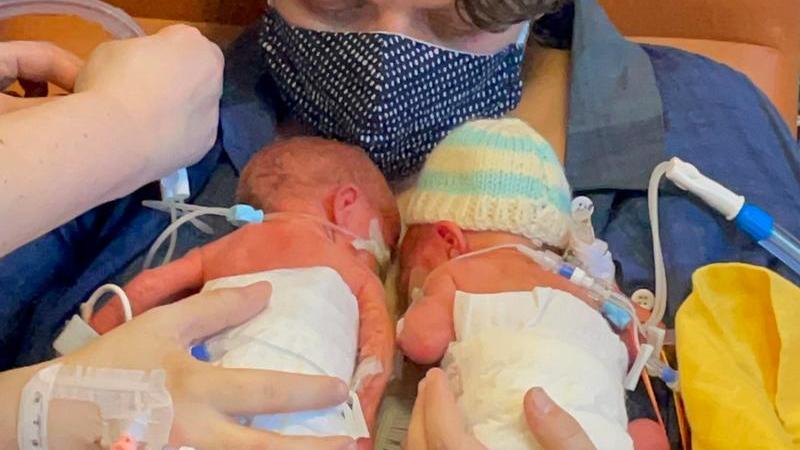
The next 96 days in Special Care brought so many challenges, from blood transfusions for both twins and my wife, to lumbar punctures for little Eloise when she had a blood infection. There were fortnightly checks on their eyes to check for Retinopathy of prematurity (ROP for short- an eye disease that affects many premature babies), almost daily heel pricks to check so many different things, multiple cannulas to administer drugs, and a small operation under general anaesthetic for Harry for an inguinal hernia (in his groin- very common in premature babies). There were too many suppositories to count, numerous desaturations (when the oxygen level goes too low) and bradichardias (when the heart rate goes to low).
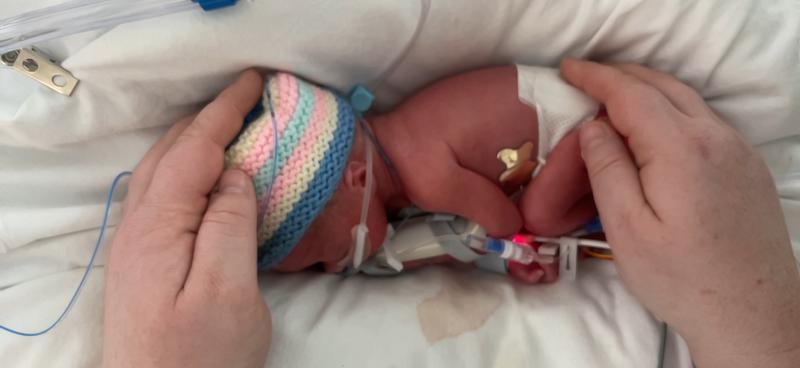
We learned very quickly how to read the machines; when to worry and when it might just be because the babies were wriggling! We had daily ward rounds so the doctors could evaluate how they were both doing; these were informative and scary in equal measures. My wife couldn’t sit in on them- it was too scary for her. One of the big things that was discussed at ward rounds was their oxygen levels. There are varying levels and our babies went through them all. From being on a ventilator where the lungs are inflated via machine, to ‘high flow’ where oxygen is blasted up the nose, to ‘low flow’ which is more of a waft! Often the decreases were trial and error to see what the babies would tolerate. It was always disheartening when the numbers went up again, but it was all for good reason. Harry even came off oxygen for two weeks, then started struggling so had to go back on. There were times when each baby went blue. They were very scary times. But the nurses were there every step of the way, every minute of the day and they taught us to be patient and trust in time being a healer. Both children suffered from PDAs- where a valve in the heart doesn’t close at birth like it should have. Multiple treatment plans were put into action to help close it, but they didn’t work. Some had a small effect, but neither closed completely. At 18 months old now, they have both been given the all clear, despite our reservations that they would spontaneously heal.
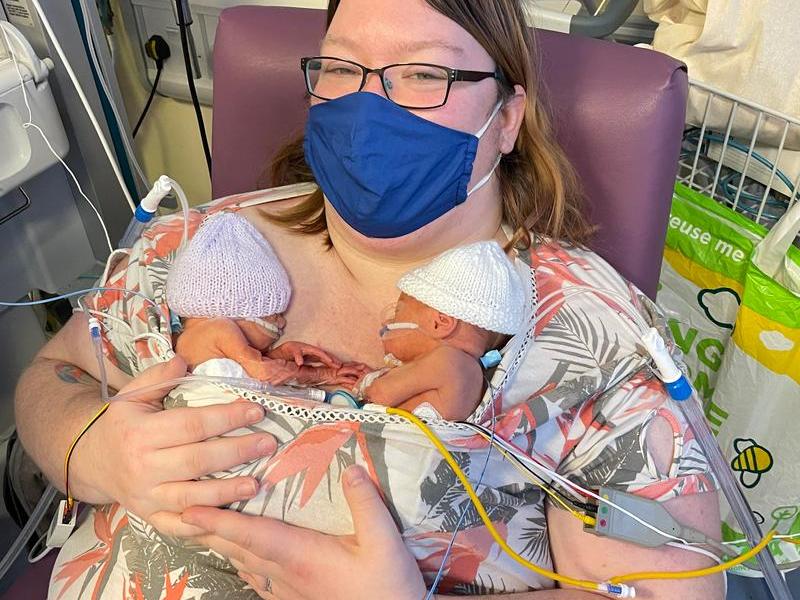
Through all the pain and hurt of the 3 and a half months that we were in hospital, we also had some unbelievable experiences that I wouldn’t swap for anything. We were given so much support; occupational therapists who helped teach us the safest, most effective way to swaddle and bathe, to the feeding team who taught us not only how to pump successfully, but how to latch both babies to each mummy, as well as bottle feed (this was in a special ‘side lying’ position that helps premature babies) and the most amazing psychology team who helped set up a fantastic support network for once we were all discharged. We made some fantastic friends, some of whom we are still in touch with 18 months down the line, and we established some fantastic routines, which were then easy to continue at home. The babies slept through from about 5 weeks old corrected, and now give us a solid 2 naps per day and 12 hours sleep a night!
Harry came home on oxygen, but soon weaned off it when he was in the comfort of his own home.
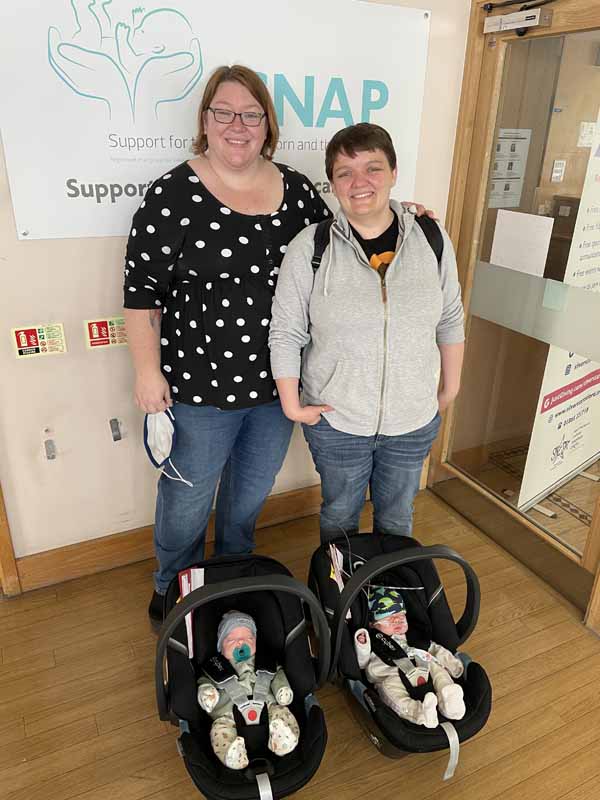
Now they are healthy and happy 18 month olds who attend a childminder twice a week and think soft play is the best thing ever, just like any other toddlers!
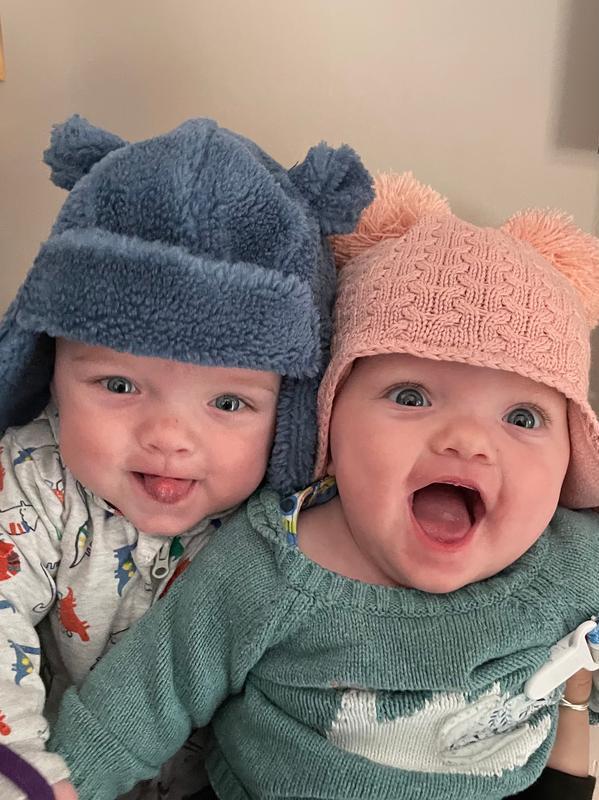
Having said that, the trauma my wife and I both went though has left significant lasting damage. My wife has been diagnosed with PTSD and regularly sees a psychologist where she can unpick her thoughts and feelings. It’s not been an easy journey, but we’re all getting there, one step at a time.
I would never wish NICU time on anyone, but it’s our story; our journey and one that I’m proud to have ridden with my family.

-strap.svg)
